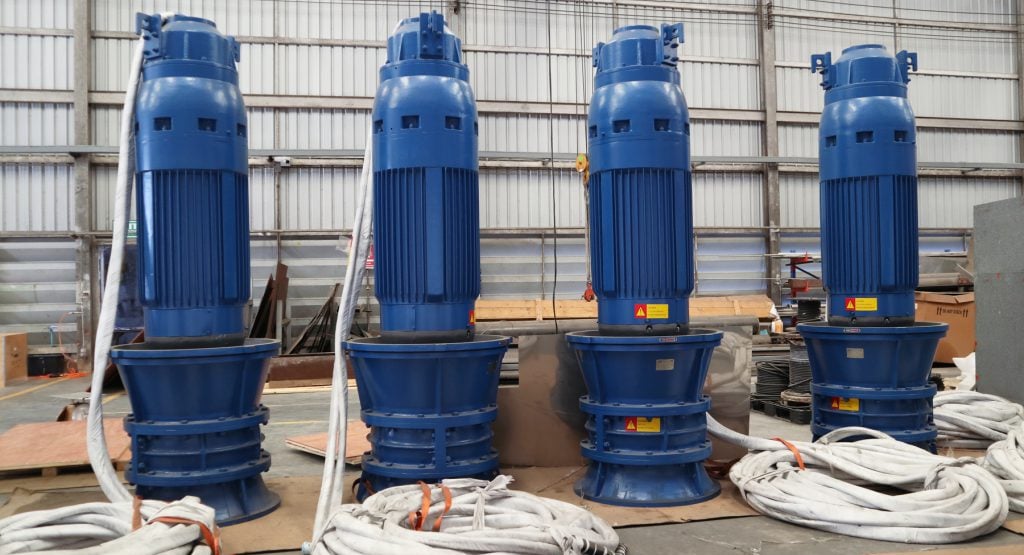Check out our new Substack, Merchandise Trade With Legion
Understanding the Different Types of Water Pumps
This blog will walk you through the different types of water pumps, their unique features, and their ideal applications.
ENGLISH
4 min read


Water pumps are indispensable devices that play a crucial role in our daily lives, from ensuring a steady water supply in our homes to powering complex industrial processes.
They are used to move water from one location to another, and their applications span various sectors, including agriculture, manufacturing, and residential use.
However, with so many types of water pumps available, choosing the right one for your specific needs can be challenging. This guide will walk you through the different types of water pumps, their unique features, and their ideal applications.
1. Centrifugal Pumps
Centrifugal pumps are among the most commonly used types of water pumps. They operate by using a rotating impeller to move water, converting rotational energy into hydrodynamic energy. As the impeller spins, it creates a centrifugal force that pushes water outwards from the center of the impeller towards the edges, where it exits the pump at high pressure.
Applications:
Irrigation Systems: Centrifugal pumps are widely used in agriculture to move water from a source, such as a river or reservoir, to the fields.
Water Supply: These pumps are commonly used in residential water supply systems to move water from a well or municipal supply into the home.
Drainage Systems: Centrifugal pumps are also used in drainage systems to remove excess water from areas like basements or construction sites.
Advantages:
High flow rates
Simple and robust design
Relatively low maintenance
2. Submersible Pumps
Submersible pumps are designed to operate underwater, typically in wells, sumps, or water tanks. Unlike other types of pumps that pull water, submersible pumps push water to the surface. This makes them highly efficient, as they do not have to overcome air pressure resistance. These pumps are hermetically sealed, preventing water from entering the motor and causing damage.
Applications:
Deep Well Pumping: Submersible pumps are ideal for extracting water from deep wells, where the water level is far below the pump.
Sewage Treatment: These pumps are used to move wastewater in sewage treatment plants, as they can handle solids and sludge.
Drainage: Submersible pumps are also used to drain water from flooded areas or construction sites.
Advantages:
High efficiency
Quiet operation
Capable of handling solids and sludge
3. Diaphragm Pumps
Diaphragm pumps operate by using a flexible membrane (the diaphragm) to create a vacuum, which draws water into the pump chamber. When the diaphragm moves in the opposite direction, it forces the water out of the chamber. Diaphragm pumps are positive displacement pumps, meaning they move a fixed amount of water with each cycle, making them ideal for applications that require precise dosing or handling of viscous fluids.
Applications:
Industrial Processes: Diaphragm pumps are used in industries where precise fluid control is required, such as in chemical processing.
Agriculture: These pumps are also used in agricultural settings to handle viscous liquids like fertilizers or pesticides.
Waste Management: Diaphragm pumps are capable of handling liquids with suspended solids, making them suitable for waste management applications.
Advantages:
Ability to handle viscous liquids and solids
Precise dosing capabilities
Self-priming
4. Positive Displacement Pumps
Positive displacement pumps move water by trapping a fixed amount of it and forcing that trapped volume into the discharge pipe. These pumps are capable of delivering a consistent flow regardless of pressure changes, making them suitable for high-pressure applications. There are several types of positive displacement pumps, including gear pumps, piston pumps, and screw pumps.
Applications:
Hydraulic Systems: Positive displacement pumps are commonly used in hydraulic systems, where consistent pressure and flow are crucial.
Chemical Processing: These pumps are used in chemical plants to handle high-viscosity fluids or those containing solids.
Food and Beverage Industry: Positive displacement pumps are also used in the food and beverage industry to move products like syrups, sauces, and creams.
Advantages:
Consistent flow rate
High-pressure capabilities
Ability to handle high-viscosity fluids
5. Jet Pumps
Jet pumps work by using a combination of suction and pressure to move water. They are commonly used for shallow wells, where the water table is not too deep. Jet pumps create a vacuum by forcing water through a narrow nozzle, which lowers the pressure and allows water to be drawn up from the well.
Applications:
Shallow Wells: Jet pumps are often used in residential water supply systems where the well is less than 25 feet deep.
Water Pressure Boosting: These pumps are also used to boost water pressure in homes or small commercial buildings.
Irrigation: Jet pumps can be used in small-scale irrigation systems where water needs to be moved from a shallow source to the fields.
Advantages:
Suitable for shallow wells
Can be used to boost water pressure
Simple installation
6. Peristaltic Pumps
Peristaltic pumps operate by moving water through a flexible tube using rollers or shoes that compress the tube. As the rollers move along the tube, they create a vacuum that draws water into the tube, and as they continue to move, they push the water out. This design makes peristaltic pumps ideal for handling fluids that are sensitive to contamination or require precise dosing.
Applications:
Chemical Dosing: Peristaltic pumps are commonly used in water treatment plants for dosing chemicals like chlorine or pH adjusters.
Medical Applications: These pumps are also used in medical devices for delivering precise doses of medication.
Food and Beverage Industry: Peristaltic pumps are used to move products that require hygienic handling, such as dairy products or beverages.
Advantages:
Precise dosing capabilities
Hygienic operation
Ability to handle delicate or shear-sensitive fluids
Understanding the different types of water pumps and their specific applications can greatly assist in selecting the right pump for your needs. Whether you're looking to irrigate a farm, supply water to a home, or manage industrial processes, there's a water pump designed for the task.
Each type of pump has its unique advantages, making it suitable for specific applications. By choosing the right pump, you can ensure efficient water management, save energy, and reduce maintenance costs.

